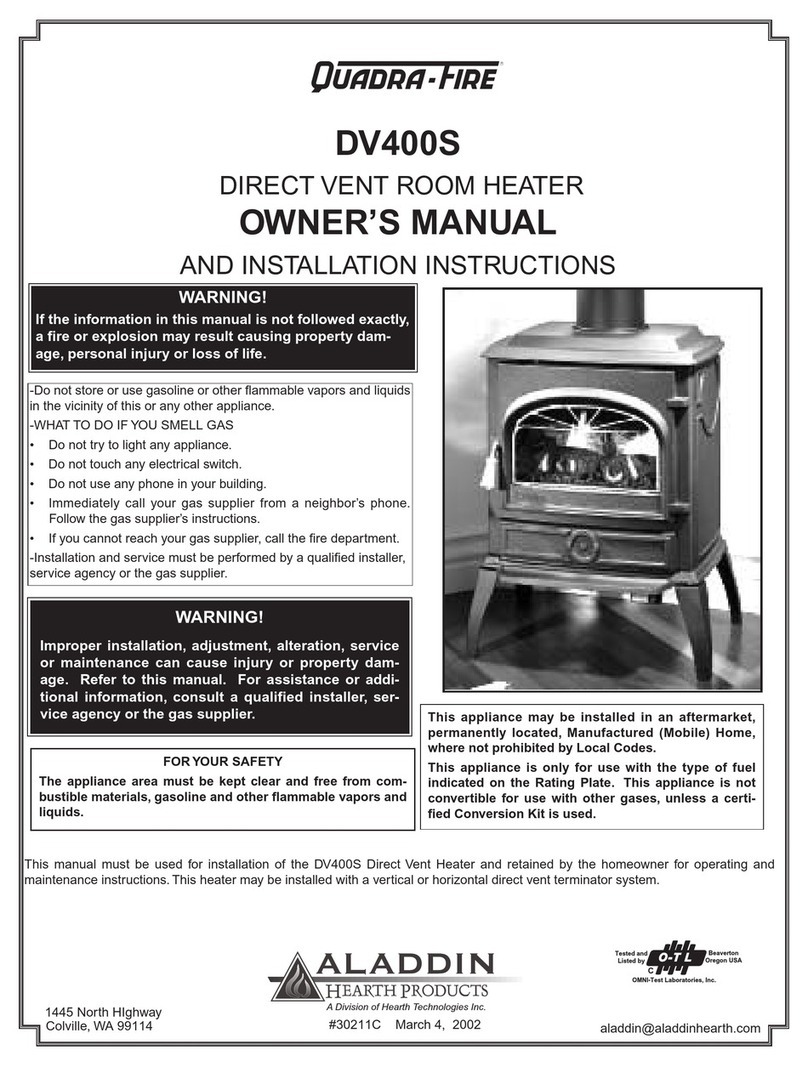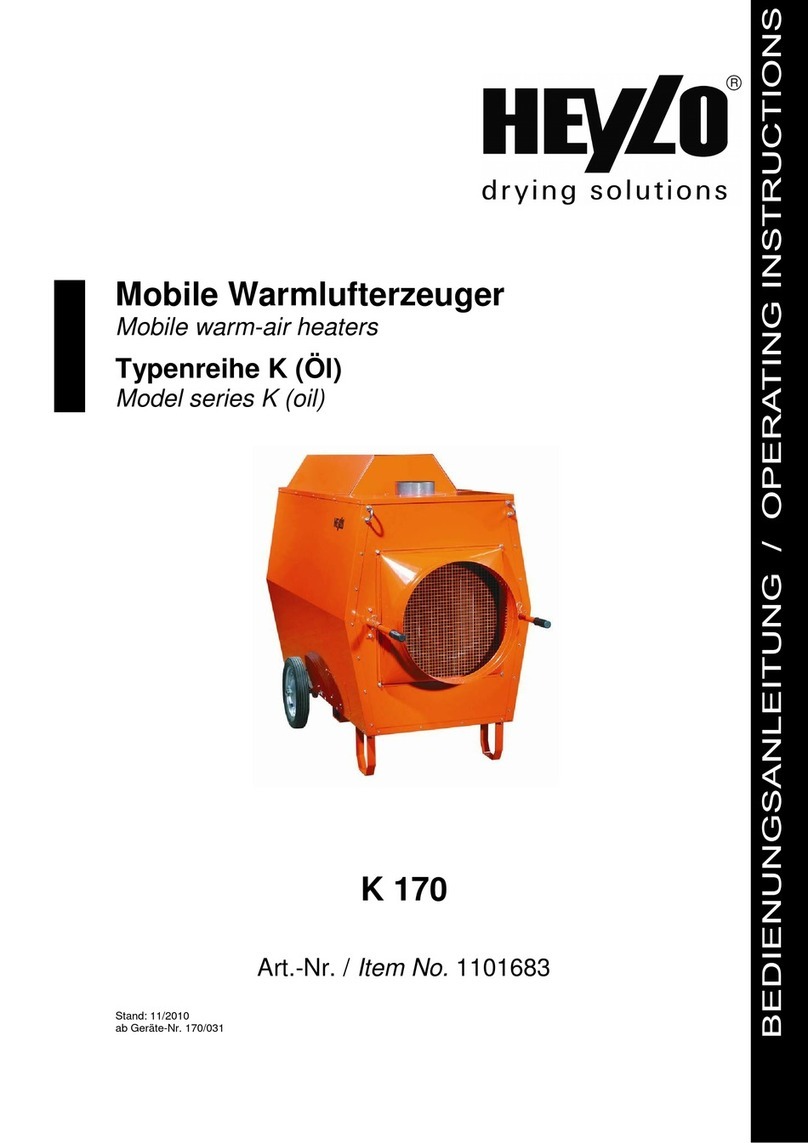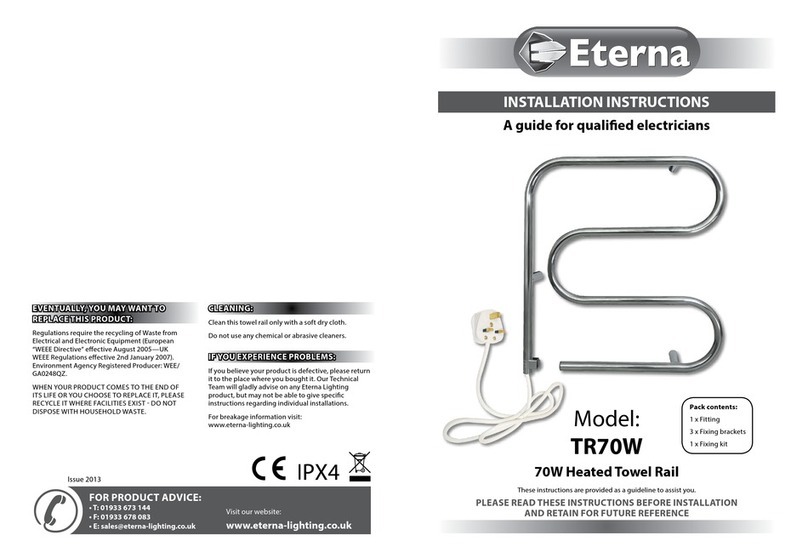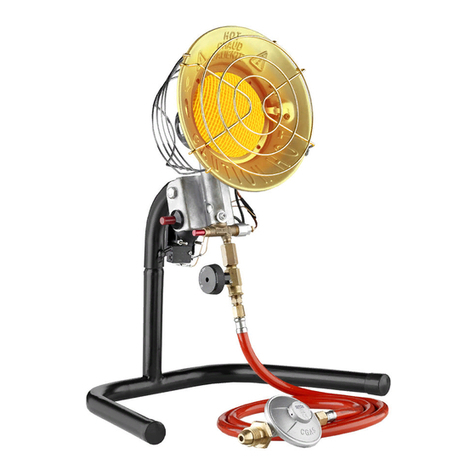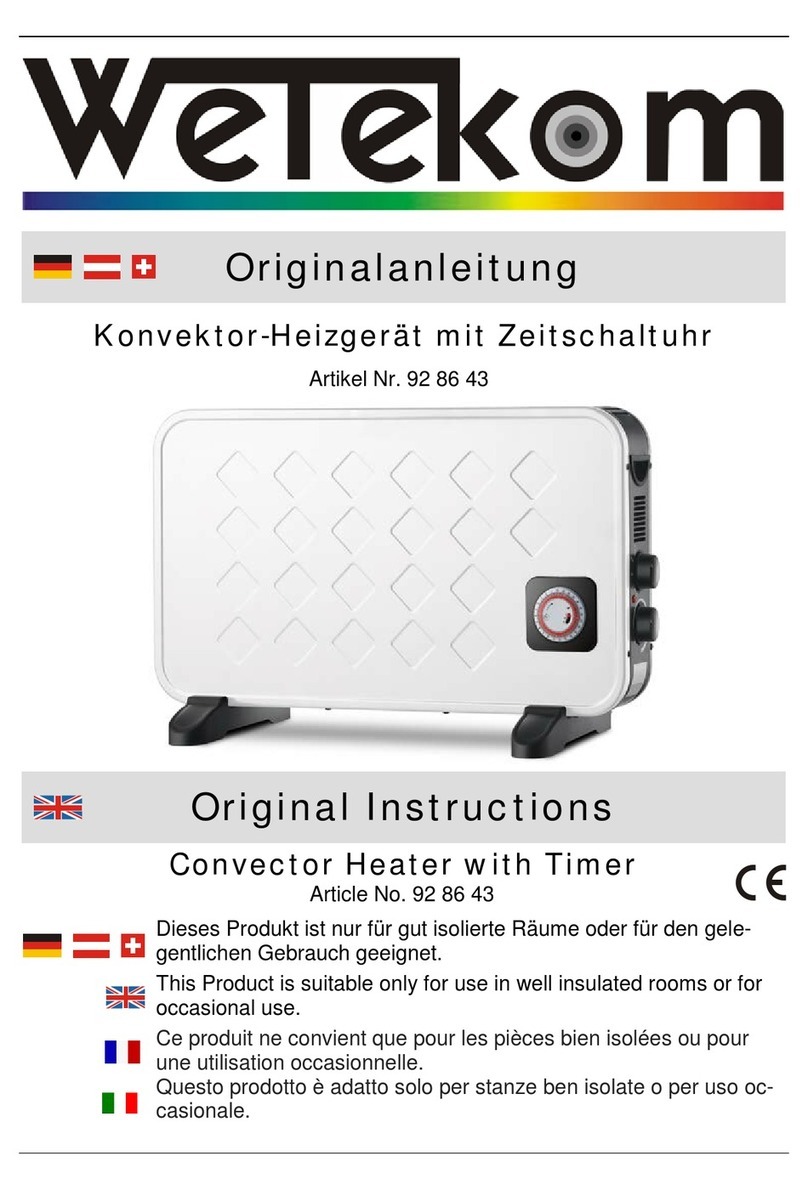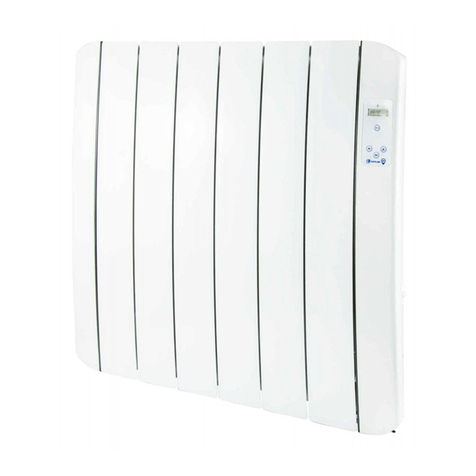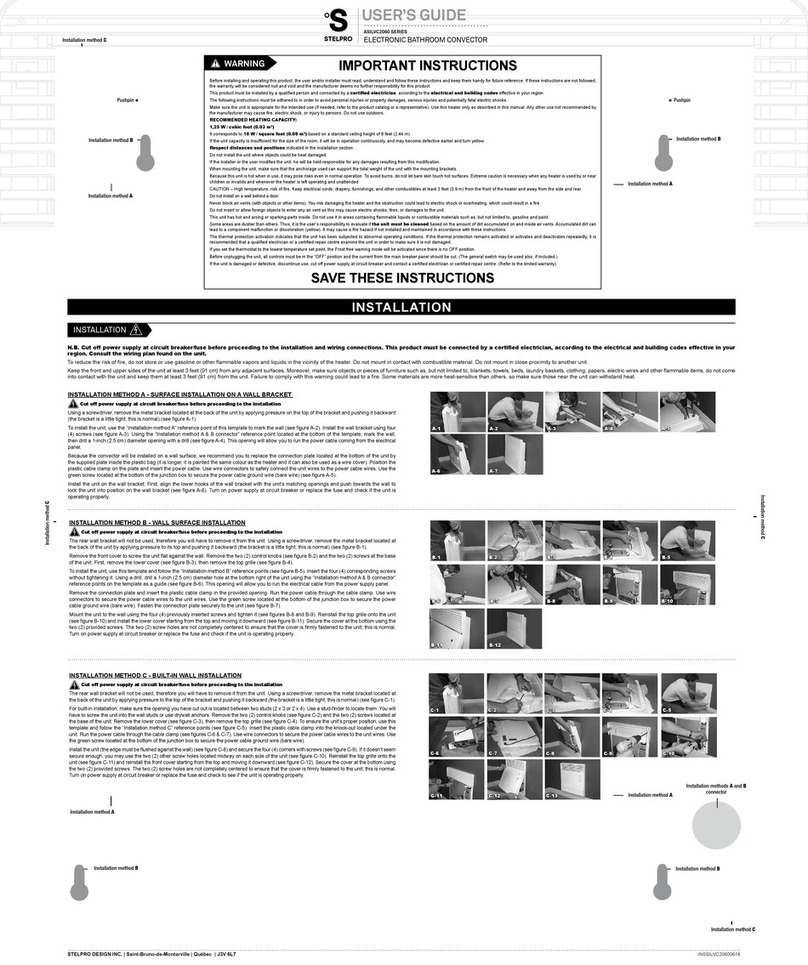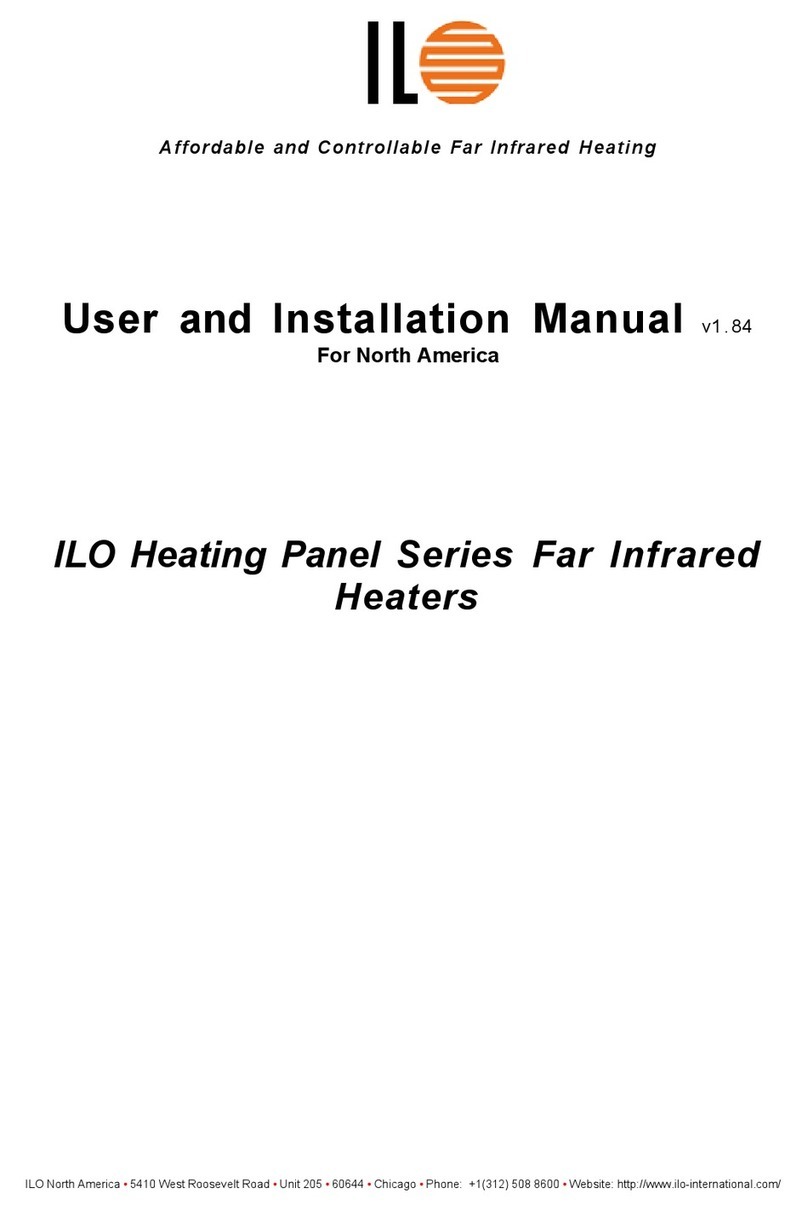
Page 2 Quadra-Fire · Sapphire · 250-7233H September 1, 2008
and Welcome to the Quadra-Fire Family!
Hearth & Home Technologies welcomes you to our tradition
of excellence! In choosing a Quadra-Fire appliance, you
have our assurance of commitment to quality, durability,
and performance.
This commitment begins with our research of the market,
including ‘Voice of the Customer’ contacts, ensuring we
make products that will satisfy your needs. Our Research
and Development facility then employs the world’s most
advanced technology to achieve the optimum operation
of our stoves, inserts and fireplaces. And yet we are old-
fashioned when it comes to craftsmanship. Each appliance
is meticulously fabricated and gold and nickel surfaces are
hand-finished for lasting beauty and enjoyment. Our pledge
to quality is completed as each model undergoes a quality
control inspection.
We wish you and your family many years of enjoyment in
the warmth and comfort of your hearth appliance. Thank
you for choosing Quadra-Fire.
SAMPLE OF SERIAL NUMBER / SAFETY LABEL
LOCATION: ON BACK OF APPLIANCE
Manufactured Date
FAN TYPE VENTED CIRCULATOR / VENTILATEUR
CIRCULATOIRE
Blower Electrical Rating / Évaluation du Ventilateur
Électrique:
115 V., 1.5 Amps, 60 Hz, 150 Watts
Thermal Efficiency / Efficacité Thermique*
84% NG (blower on / avec ventilateur allumé)
82% LP (blower on / avec ventilateur allumé)
* With Maximum horizontal length. / Avec longueur horizontale maximum.
MINIMUM CLEARANCES TO COMBUSTIBLES / ESPACE MINIMUM AUX COMBUSTIBLES
Minimum clearances required from combustible construction for all appliance surfaces. / Espaces minimum exigés de la construction
combustible aux surfaces de l’appareil.
A. Side of stove top to side wall 6 in. (152 mm) Du coté du poêle au coté du mur
B. Rear of stove top to back wall 3 in. (76 mm) Le contrôle arrière au mur arrière
C. Corner of stove top to side wall 1 in. (25 mm) Du Coin du Poêle au coté du mur
D. Minimum Alcove Height 54 in. (1372 mm) Hauteur minimum de l'alcôve
E. Maximum Alcove Depth 36 in. (914 mm) Profondeur maximum de l'alcôve
F. Minimum Alcove Width 36 in. (914 mm) Largeur minimum de l'alcôve
G. Mantle Clearance from stove top 23 in. (584 mm) Espace libre du poéle au manteau
HEARTH: A non-combustible hearth pad is not required. However, the floor beneath the stove must be stable, level, and strong enough to support the stove without a tipping hazard.
CHEMINÉE: Un coussinet non-combustible de cheminée n’est pas exigé. Cependant, le plancher en dessous du poêle doit être droit, à niveau et assez fort pour supporter le poêle
sans le hasard de basculer.
C
C
A
A
APPROVED FOR CANADA AND USA TO:
ANSI Z21.88A-2000 / CSA 2.33a-M00 Vented Gas Fireplace Heaters, and
applicable sections of UL307b Gas Burning Heating Appliances for Manufactured
Homes and Recreational Vehicles, CAN/CGA 2.17-M91 “Gas Fired Appliances
for use at High Altitudes.” This appliance is manufactured for operation with
Natural Gas.
For conversion to propane Manufacturer’s Part #844-9730 and instructions must
be used. This appliance may be installed in a bedroom or bedsitting room; in
Canada remote thermostat installation is required.
APPROUVÉ POUR LE CANADA ET LES ÉTATS-UNIS:
ANSI Z21.88a-2000 / CSA 2.33a-M00 Fournaises au Gaz avec Ventilation,
et les sections applicable de UL 307b Appareils de Chauffage Au Gaz pour
les Maisons Mobiles et les Véhicules Motorisés, CAN/CGA 2.17-M91 “Gas
Fired Appliances for use at High Altitudes”. Cet appareil est manufacturé
pour l’opération avec le Gaz Naturel. Pour une conversion au gaz propane
les pièces du Manufacturier #844-9730 et ses instructions doivent être
utilisées. Cet appareil peut être utilisé dans une chambre à coucher ou salle
de séjour; au Canada, l’installation d’un thermostat à distance est exigée.
Date of Manufacture / Date du Manufacturier
2008 2009 2010 Feb Mar Apr May Jun Jul Aug Sep Oct Nov DecJan
DO NOT REMOVE THIS LABEL / NE PAS ENLEVER L’ÉTIQUETTE
Made in U.S.A. / Fait Aux États-Unis
250-7241
D
G
WARNING: IMPROPER INSTALLATION, ADJUSTMENT, ALTERATION, SERVICE OR MAINTENANCE CAN CAUSE INJURY OR PROPERTY DAMAGE. REFER TO THE OWNER’S INFORMATION
MANUAL PROVIDED WITH THIS APPLIANCE. FOR ASSISTANCE OR ADDITIONAL INFORMATION CONSULT A QUALIFIED INSTALLER, SERVICE AGENCY OR THE GAS SUPPLIER.
AVERTISSEMENT: UNE INSTALLATION, UN AJUSTEMENT, UNE ALTÉRATION, UN SERVICE OU UN ENTRETIEN INCORRECTS PEUVENT CAUSER DES DOMMAGES MATÉRIELS.
RÉFÉREZ-VOUS AU MANUEL D’INFORMATION FOURNI AVEC CET APPAREIL. POUR ASSISTANCE OU DES INFORMATIONS SUPPLÉMENTAIRES CONSULTEZ UN INSTALLATEUR
QUALIFIÉ, UNE AGENCE DE SERVICE OU UN FOURNISSEUR DE GAZ.
CAUTION: HOT WHILE IN OPERATION. DO NOT TOUCH. SEVERE BURNS MAY RESULT. KEEP CHILDREN, CLOTHING, FURNITURE, GASOLINE AND OTHER LIQUIDS HAVING FLAMMABLE VAPORS
AWAY.
ATTENTION: CHAUD LORQU’IL EST EN OPÉRATION. NE TOUCHEZ PAS. DES BRÛLURES SÉVÈRES PEUVENT EN RÉSULTER. GARDEZ LES ENFANTS, LES VÊTEMENTS, LES MEUBLES, LA GAZOLINE
ET LES AUTRES LIQUIDES DE VAPEUR INFLAMMABLE ÊLOIGNÉS
CAUTION: DO NOT OPERATE THIS APPLIANCE WITH GLASS REMOVED, CRACKED OR BROKEN. REPLACEMENT OF THE PANEL(S) SHOULD BE DONE BY A LICENSED OR QUALIFIED
SERVICE PERSON.
ATTENTION: CET APPAREIL NE DOIT PAS ÊTRE OPÉRÉ SI LA VITRE EST BRISÉE, CRAQUÉE OU ENLEVÉE. LE REMPLACEMENT DU PANNEAU DOIT ÊTRE FAIT PAR UNE PERSONNE
LICENSÉE ET QUALIFIÉE.
P.4.1-02 Canada Minimum pipe (P.4.1-02 Le canada tuyau minimum) 64.08% NG / 65.42% LP
E
A
B
F
A
Top Vent: Input Rate on “HI” (BTU/Hr)
Input Rate on “LO” (BTU/Hr)
Maximum Output (BTU/Hr)
Main Burner Orifice
Rear Vent: (No vertical) Input Rate on “HI” (BTU/Hr)
Input Rate on “LO” (BTU/Hr)
Main Burner Orifice
Minimum Inlet Pressure (Inches W.C.)
Maximum Inlet Pressure (Inches W.C.)
Manifold Pressure on “HI” (Inches W.C.)
**Max. Venting, Blower On
For use with Natural Gas
Usage au Gaz Naturel
0-2000’
30,000
21,000
25,000
.1065 (36DMS)
26,000
18,000
.0960 (41DMS)
4.5”
7.0”
3.5”
For use with Propane
Usage au Gaz Propane
0-2000’
30,000
24,500
24,600
.0635 (52DMS)
26,000
20,000
.0595 (53DMS)
11”
14”
10”
Bouche Supérieure: Puissance Évaluée à “HI” (BTU/Hr)
Puissance Évaluée à “LO” (BTU/Hr)
Puissance Maximum (BTU/Hr)**
Orifice du Brûleur Principal
Conduit postérieur: Puissance Évaluée (non vertical) à “HI” (BTU/Hr)
Puissance Évaluée à “LO” (BTU/Hr)
Orifice du Brûleur Principal
Pression Minimum de la Valve (pouces W.C.)
Pression Maximum de la Valve (pouces W.C.)
Pression du Collecteur d’ Échappement à “HI” (pouces W.C.)
** Ventilation Maximum, Ventilateur Allumé
SAMPLE
Report No. / Rapport Numéro
061-S-19b-5
MODEL / MODÈLE: SAPPHIRE SERIAL NO.
1445 North HIghway
Colville, WA 99114
www.quadrafire.com
007
VENTED GAS FIREPLACE HEATER
FOURNAISE AU GAZ AVEC VENTILATION
NOT FOR USE WITH SOLID FUEL /
NE PAS UTILISER AVEC LE COMBUSTIBLE
SOLIDE
Portland Serial Number
Model Name
Test Lab & Report No.
Barcode
